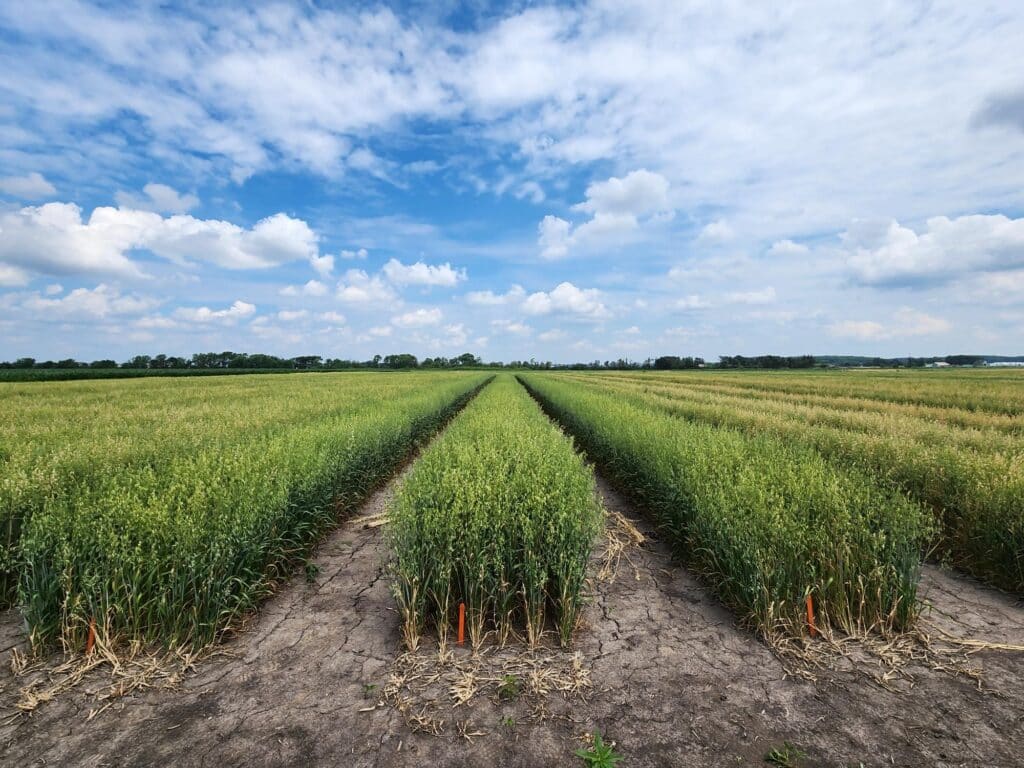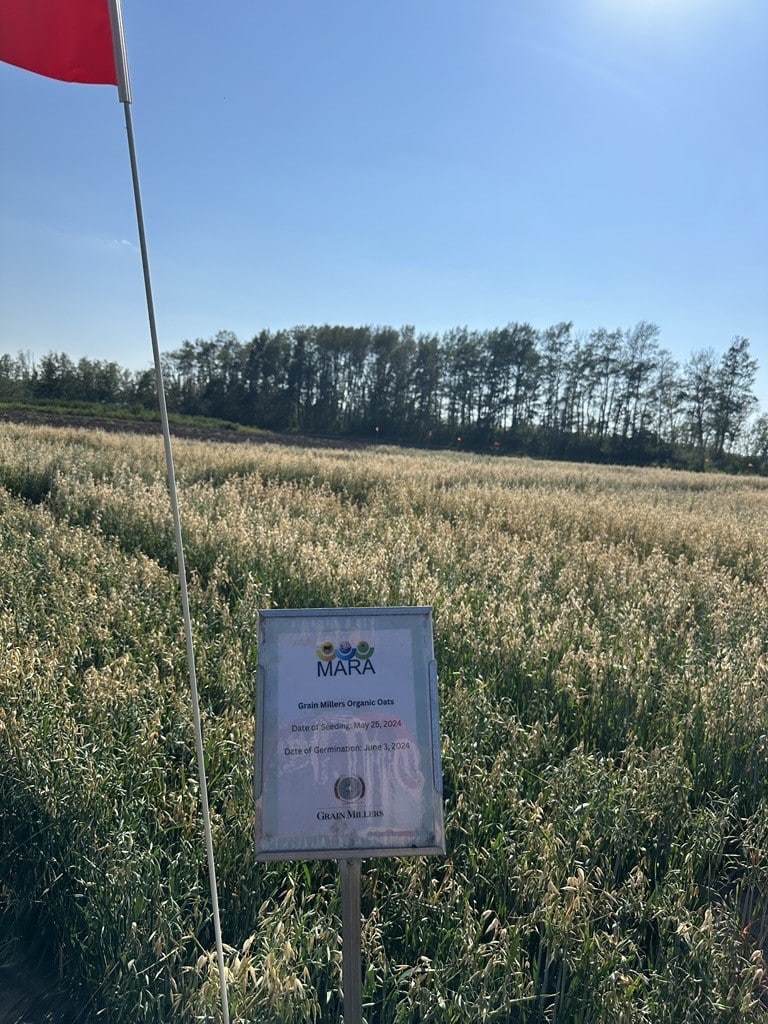How to Select Resilient Oat Varieties
December 9, 2024
Step 1: Preseason Planning
It’s important to plan out your season when selecting oat varieties for your operation. Grain Millers has created both US and Canada Recommended Oat Variety Guides. These guides highlight geographical areas where certain oat varieties have exhibited their highest potential to meet oat milling standards. This can be a great tool to help narrow down varieties to consider.

Step 2: Disease Resistance
Diseases can cause catastrophic crop loss at multiple points during the growing season. This can be mitigated if disease resistance is considered in management decisions at season planning. A level of resistance to these diseases is important, as it may reduce the need for a fungicide application during the season. Resistance to these diseases is especially important in organic production systems, where fungicide application is prohibited. Many of the varieties available today offer strong disease resistance packages with varying levels of resistance to oats’ major diseases:
- Rusts: Crown rust is one of the most prominent diseases for oats, partly due to the fact that there are multiple species of the disease that can infect oat plants. Thankfully, there are multiple varieties on the market that have an assortment of resistance genes to provide a level of resistance to crown rust on oats, such as ORe3542M (Canada) & Rushmore (US), increasing tolerance against different strains that may be prevalent in different years. If you are in an area with a history of rust infections, it is best practice to choose a variety rated at least “Moderately Resistant” for crown rust.
- Barley Yellow Dwarf Virus: BYDV is a virus vectored by aphids and is transferred to oats during times when aphids are feeding. This disease is identifiable by leaves that typically turn a prominent red orange color. Since it is a virus, there is no fungicide option for control. If you are in a wetter area and often have aphid issues that lead to BYDV presence in your oats, select oat varieties that carry a genetic resistance to BYDV; AAC Wesley (Canada) & Rockford (US) are varieties with resistance.
Step 3: Management Considerations
It is important to identify your farms’ typical application of practices, management limitations, and goals for overall use of the land you intend to grow your oats on when selecting which variety to grow. Some key considerations include:
- Planting timing: Time is your friend, and planting early, in conjunction with a shorter-season variety like AAC Douglas (Canada) or Reins (US), can further assist in creating a larger window of opportunity to add management practices such as a cover crop for grazing following harvest. Planting early could also allow you to use a longer season variety, like CDC Byer (Canada) or MN Pearl (US), that could have higher yield potential if your growing season allows. If you usually seed oats following other crops in your rotation (not first), choosing a shorter season variety may also help ensure that the oats will be ready to harvest in a timely manner come fall.
- Straight cutting vs Swathing: Want to straight cut your crop? Pick a variety that is shorter in stature, such as CDC Anson (Canada) or Sumo (US), that still produces good yields with less stem biomass to worry about drying down during harvest. Your farm swaths all of the oat acres? Lean towards a variety with enough height to cut, and a good lodging rating, like CDC Endure (Canada) or Rushmore (US) to mitigate the risk of the crop falling over prior to swathing.
- Yield targets: Each year, regional variety trials are executed to identify the best-performing and highest-yielding varieties. After examining other necessary characteristics on your checklist that you would need in a variety, compare the ones that fall within your needs to how well they yielded for your particular growing area. Varieties will perform differently in various geographic locations, so it is helpful to reference pre-existing data for your region.

Step 4: Post-harvest Considerations
When selecting oat varieties for fields across your operation, you will want to consider your intentions for each field following harvest:
- Baling straw: Consider planting a variety that is taller in stature and produces more stem biomass, such as CDC Arborg (Canada) or MN Pearl (US), if you intend to bale straw following the crop.
- Cover crop or field management: Look into a shorter season variety to allow for ample time to complete the project or establish a cover crop, like AAC Wesley (Canada), Reins or Sumo (US).
- Underseeding: When looking to plant an underseeded crop, consider the impact that varying varieties may have on this and the impact this may have on seeding rates. Oat varieties that exhibit more vertical plant structure, such as CS Camden (Canada) or Rushmore (US), may lend themselves nicely to this type of field management while still maintaining some weed suppression and the opportunity to meet milling standards.
Additional Resources
Planning, selecting, and seeding a resilient oat variety for your area is a pivotal decision in a successful cropping season. There are many resources available to learn more about oat production outside of the Grain Miller Oat Production Booklet linked above.
- You can check out resources such as POGA’s Oat Grower Manual for more information on oat production.
- To learn more about specific varietal characteristics consult varietal information from sources such as Practical Farmers of Iowa Oat Variety Trial Results in the US or the Saskatchewan Seed Guide in Canada for example.
- Seed dealers will also have information on specific characteristics of varieties they sell.
If you have more questions regarding specific varieties that may work on your farm to help you accomplish your goals, please do not hesitate to reach out. Call your Grain Millers Crop Specialist or email the Crop Science team at cropscience@grainmillers.com. The Crop Science team at Grain Millers would be more than happy to discuss varietal options and seeding considerations with you.

